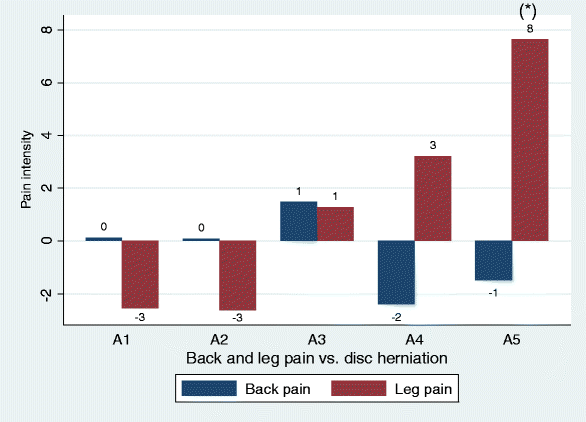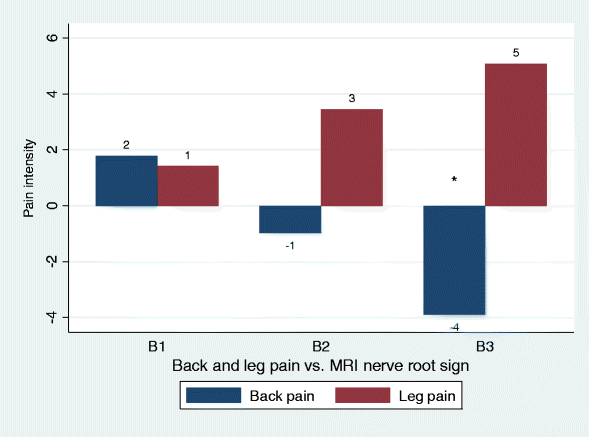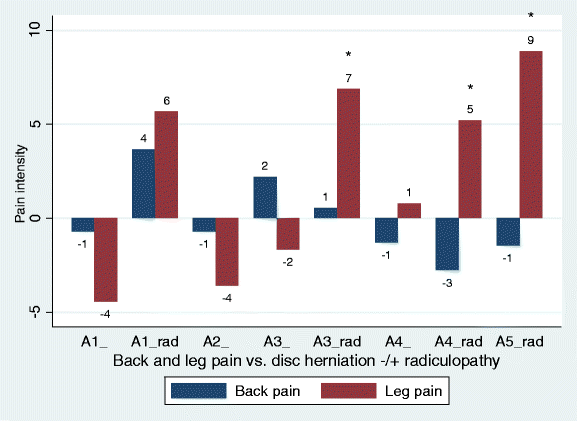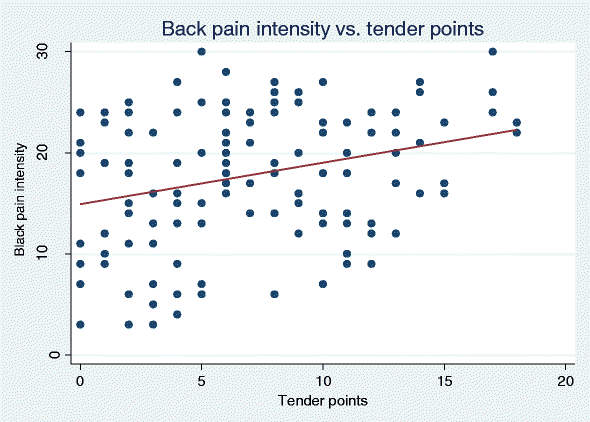Back pain was less explained than leg pain: a cross-sectional study using magnetic resonance imaging in low back pain patients with and without radiculopathy
- PMID: 26635015
- PMCID: PMC4669644
- DOI: 10.1186/s12891-015-0827-4
Back pain was less explained than leg pain: a cross-sectional study using magnetic resonance imaging in low back pain patients with and without radiculopathy
Abstract
Background: Cross-sectional studies have shown associations between lumbar degenerative manifestations on magnetic resonance imaging (MRI) and low back pain (LBP). Disc herniations and other degenerative manifestations, however, frequently occur in asymptomatic individuals. The purpose of this cross-sectional study was to analyze for associations between pain intensity and degenerative manifestations and other pain variables in patients for whom prognostic factors have been published previously.
Methods: Included were 141 consecutive patients with and without radiculopathy, all sick-listed 1-4 months due to low back pain and subsequently examined by MRI of the lumbar spine. Using different methods of grouping the degenerative manifestations, linear regression analyses were performed with the intensity of back + leg pain, back pain and leg pain as dependent variables covering actual pain and pain the preceding 2 weeks. The clinical classification into +/- radiculopathy was established before and independently of the standardised description of MRI findings.
Results: Radiculopathy was present in 43 % of the patients. Pain was best explained using rank-ordered degenerative manifestations on MRI. Back pain and leg pain were differently associated, and back pain was less explained than leg pain in the multivariate analyses (15 % vs. 31 % of the variation). Back pain intensity was higher in patients with type 1 Modic changes and in some patients with nerve root touch, but was not associated with disc herniations. Leg pain intensity was well explained by disc herniations causing MRI nerve root compromise and radiculopathy. In patients with radiculopathy, nerve root touch caused as much leg pain as nerve root displacement or compression. High intensity zones and osteophytes were not associated with back pain, but only associated with leg pain in patients with radiculopathy. Tender points explained some of the back pain, and widespread pain explained leg pain in some of the patients without radiculopathy.
Conclusions: Back pain was associated with type 1 Modic changes, nerve root touch and tender points, whereas leg pain was associated with osteophytes, HIZ, disc herniation, all sorts of MRI nerve root compromise, radiculopathy and widespread pain.
Figures






References
Publication types
MeSH terms
LinkOut - more resources
Full Text Sources
Other Literature Sources
Medical
Miscellaneous

